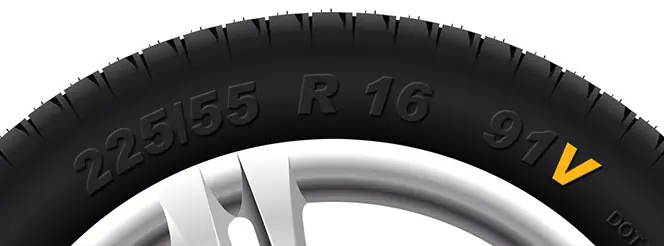How to Clean and Lubricate Your Bike Chain
Kwik Fit | Monday 16th December 2024 10:00am

Keeping your bike chain clean isnít just a matter of aesthetics. Did you know that regular bicycle chain maintenance can not only help your bike run more smoothly, but it can also keep you safe on the road? Plus, cleaning your bike properly may also prolong its lifespan ó saving you money in the long run.
With the average bike chain comprising a whopping 116 links, it has more working parts than any other bike component, giving it all the more reason to need regular TLC to keep it functioning as it should.
Read on to learn more about why itís important to take care of your bike chain and how it may not be as daunting as you think to clean and lubricate it yourself.
Bike Chain Maintenance
If youíre new to cycling, itís easy to overlook the importance of maintaining your bikeís chain in favour of more Ďexcitingí features like the brakes and the bell. But, itís worth pointing out that a dirty, rusty bike chain wonít just make you work harder when youíre out on a ride, itís also bad for your bike.
If you neglect your bike chain and leave it to get dirty or rust, the chain links wonít pivot as they go over the sprocket and, eventually, the chain may come off the sprocket itself, meaning youíll no longer be able to change gear. If your pleasant family bike ride ends up with you stranded miles from home on a broken bike, then itís no laughing matter.
If cycling has become one of your regular past times, then looking after your bike chain should be a regular habit too!

A step-by-step guide to cleaning & lubricating your bike chain
Step 1: Prepare your chain
When it comes to lubricating your bike chain, preparation is everything. Donít just apply oil to a dirty chain ó all that will do is create an adhesive paste that will grind away at the chain and potentially cause even more damage. Instead, give your chain a thorough clean first.
You donít need to clean your chain every time you want to oil it, but you should always check whether itís dirty first just in case. A good tip is that, if you canít read the make and model name of the chain (this information is usually stamped on each link), then itís time to give it a once over.
Before you start, itís handy to have the following ready:
- Old newspaper
- Old rags or kitchen roll
- Some light spray oil to displace water, e.g. WD40 or GT85
- Cycle-specific chain oil
- Degreaser (avoid harmful degreasers such as diesel, benzene, gasoline, or acetone
- A clip-on chain cleaner or stiff brushes
Step 2: Take extra care with disc brakes
If your bike is equipped with disc brakes, then you should consider either covering your disc rotor or removing your wheel to clean the chain. If you donít plan to cover your disc rotor, then make sure to apply degreaser as far away from it as you can.
Alternatively, you can use a chain-cleaning device or remove the wheel and use a chain keeper instead.
Step 3: Apply degreaser
Place a sheet of newspaper between the lower run of your bikeís chain and the back wheel to keep oil off your rims. Then, spray your degreaser onto the chain whilst simultaneously turning the pedals backwards. This will ensure you cover the whole of the chain component thoroughly. If youíve opted for a chain-cleaning device, be sure to pour the degreaser in until it reaches the fill line.
Step 4: Itís ragtime!
Using one of your rags or a brush, rub the degreaser into the chain. Itís a good idea to use one rag or brush just for the drivetrain and keep a clean one back to use on the rest of your bike to avoid getting dirty black stains all over your two-wheeled pride and joy.
Step 5: Wait and rinse off
After 5 minutes, or however long the manufacturerís instructions state, wash the degreaser off. Why not use this time to give the rest of your bike a clean?
Step 6: Wipe clean
Use a rag to wipe the chain until itís no longer black. You may need to repeat the degreasing process if your chain is especially dirty.
Step 7: Dry the cycle chain
Once youíve removed all the black residue from the chain, you can now dry it using a clean, dry cloth or a rag. To prevent any build-up of rust, donít leave the chain to sit overnight before you dry it off.
Step 8: Lubricate the chain
For this final step, itís a good idea to use a cycle-specific chain oil rather than a spray lubricant. This reduces the risk of getting lubricant on the disc brake rotor or calliper. If youíre using your bike in the winter, then wet oil will work best. By applying the lubricant one drop at a time on each link, youíll have the chance to inspect your bike chain and check for any tight links or mis-pressed rivets.
Faff-free bike repairs with Fettle
Kwik Fit has partnered with Fettle to offer Ďfaff-freeí bike repairs and servicing across its growing network of workshops in the UK. From free bike assessments, to hassle-free bicycle MOTs and puncture repair services, Fettle has all your bike maintenance needs covered. You can even arrange home pick-up and delivery too if youíre based in London or Cambridge.
Any facts, figures and prices shown in our blog articles are correct at time of publication.
Featured Articles
Is it Illegal to Drive With One Headlight?
Saturday 19th July 2025
Wondering if itís illegal to drive with one headlight? Learn about the safety risks and penalties of illegal blown bulbs and why you should fix them promptly.
Air Con in EVs & Hybrids: Experts Answer Your Questions
Monday 30th June 2025
Does air con drain EV batteries? Can you use the air con while charging an electric car? Find out the answers to these questions & more from Kwik Fitís experts.
Why Is Your Car Making a Noise? Fixes & Tips
Friday 13th June 2025
When your car starts making unexpected noises, it can certainly be quite disconcerting; it may be nothing to worry about, but hereís what you need to know.









